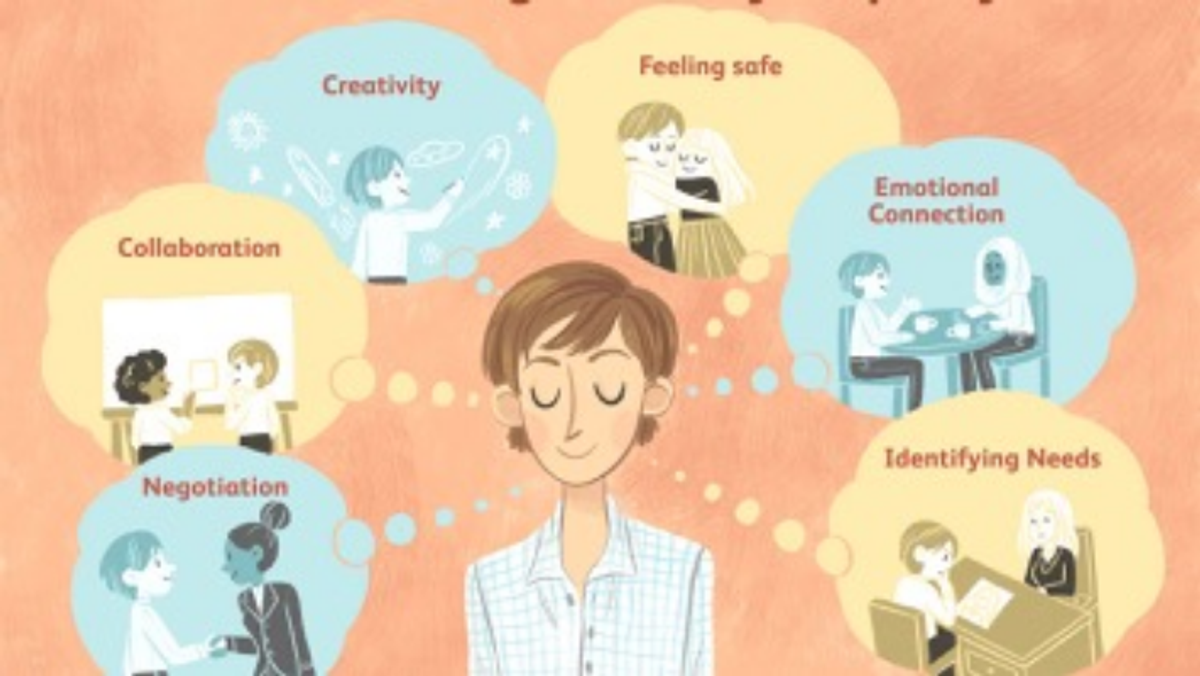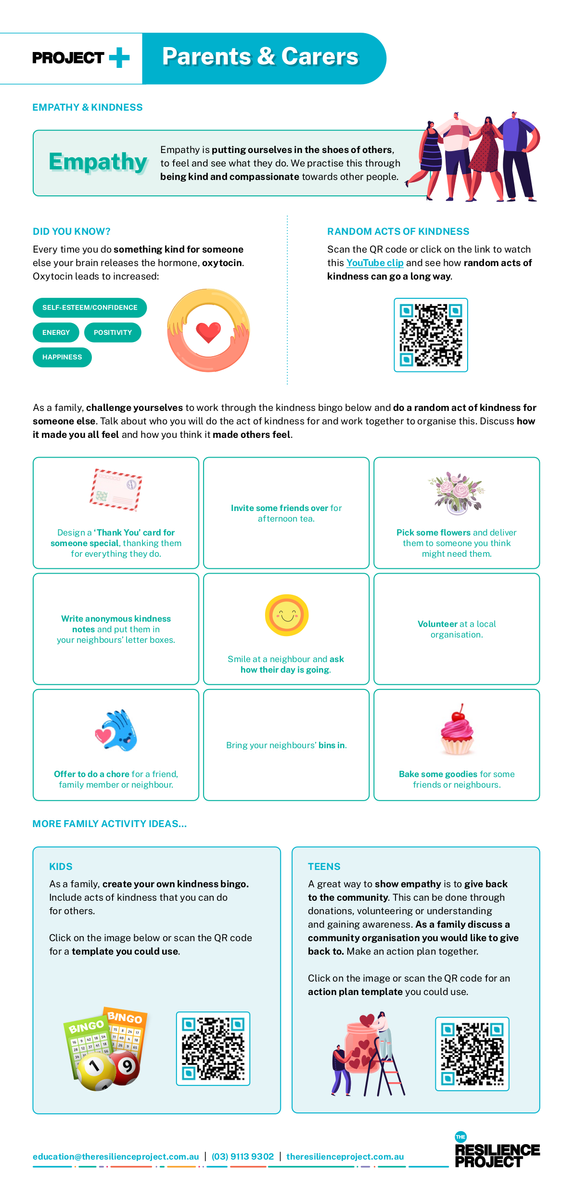Empathy

How to encourage empathy in your child
Empathy is the ability to imagine how someone else is feeling in a particular situation and respond with care. This is a very complex skill to develop. Strong empathy skills can set children up for success in life in relationships and work. The good news is that empathy is not a fixed trait—it is a skill that can be learned.
Being able to empathise with another person means that children:
- Understand that they are separate individuals
- Understand that others can have different thoughts and feelings
- Recognise the common feelings that most people experience—happiness, surprise, anger, disappointment, sadness, etc.
- Can look at a particular situation and imagine how they—and therefore their friends—might feel in this moment
- Can imagine what response might be appropriate or comforting in a particular situation
How can parents help build these skills of empathy?
1. Model the value of feelings
Show your child how you are feeling about different situations and how you deal with those feelings (actions). Model being interested in the feelings of others you interact with:
- Model asking questions of others about themselves, how they are, and what their life is like.
- Have discussions about people from many different backgrounds – religious, ethnic, political – and what they have to say.
- Be actively present with people when you talk to them. Recognise the subjects that make them passionate, happy, or sad and then discuss these with your child.
2. Help children to connect feelings to behaviours
To learn the skills of how to manage feelings effectively, children need to be able to identify and express their feelings in a positive way. As they do not always have the vocabulary to express how they are feeling, children can communicate in other ways – such as through facial expressions, body actions as well as behaviour and play.
Teaching children about cause (behaviours) and effect (feelings) can also be done through daily life examples and reading books. It can be very helpful to talk about the thoughts, feelings and behaviours of the characters when reading a story together. Ask your child: what might the characters feel in this particular situation? Connect these scenarios with the child’s own experiences. For example, if the character is sad because she misses her parents, connect that feeling to a time the child also expressed sadness for something similar. This helps the child more clearly understand the connection between feelings, thoughts, and behaviours. For older children (aged five and up), ask them to step into the mind, or take the perspective, of another child or adult: “How do you think they are feeling? Why might they be upset? What could someone do to help?”
Role playing these scenarios builds up the emotional vocabulary children need for interpersonal relationships.
3. Encourage discussions about other people’s feelings
- Have discussions about what it is like for people in other situations. How do they live, work, and share?
- Spend time other people’s worries. What gives them happiness? What are their dreams? What could help them?
- Find opportunities to mix with people from other backgrounds and discuss the similarities and the differences we share.
Some more tips from The Resilience Project
As always, speak to your child’s teacher or wellbeing team at school if you have any concerns.
Mrs Lucinda Thom


